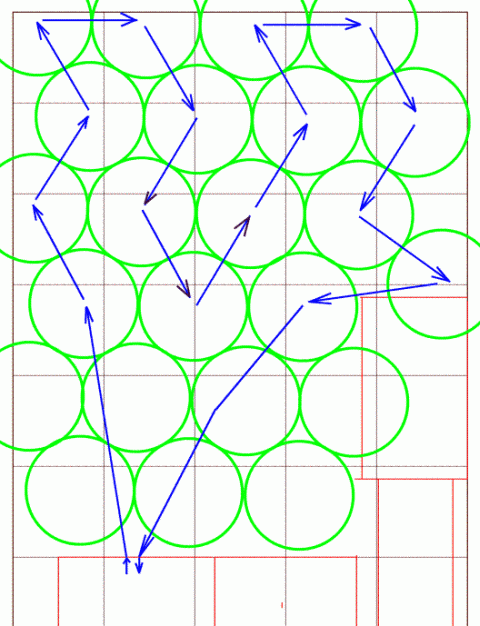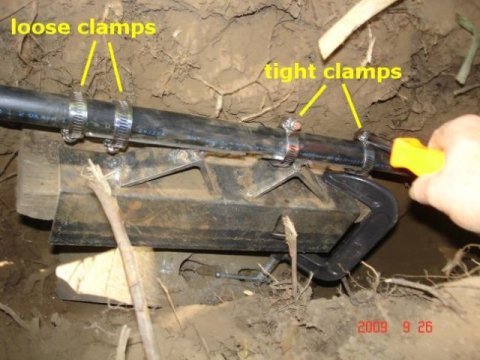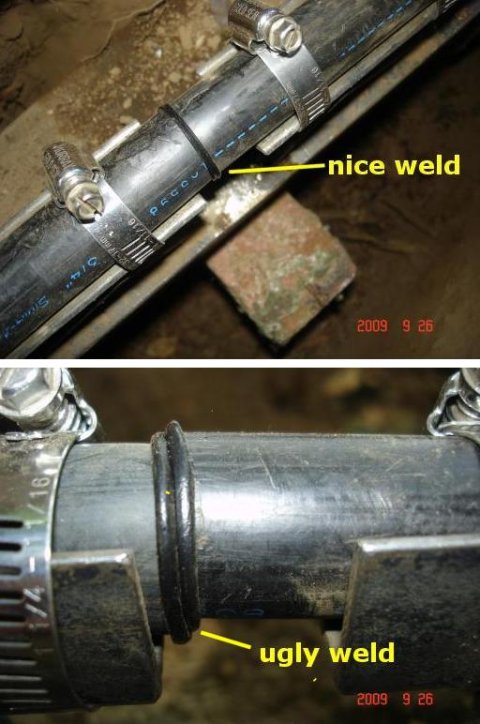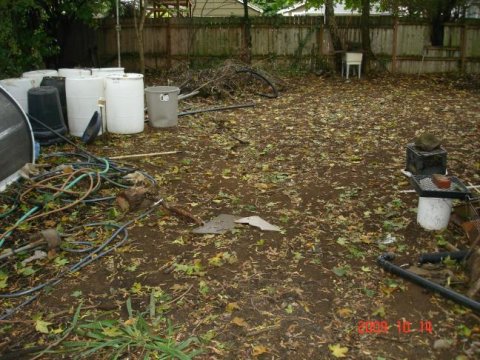The holes have been bored, and the trenches have been dug. Now, it is time to put the tubing into the ground to build the loop field. This means connecting up all the loops that have been put down into the bore holes and running them back to the house.

This is the layout AC Hacker planned initially. The unused green circles allow for expansion should it ever be needed. The current layout also allows him to split the loop into two parallel circuits if need be.

A little more work needed to be done before the connections between the bore loops could be made. First off, the trencher did its job, but a lot of dirt fell back into the trenches. A bit of shop vac work seemed to do the trick just right to clean the loose dirt out of the trenches.
AC Hakcer also had to take some time to dig out the areas between the trenches and bore holes. He says that it is worth the time trying to get the trenches dug as close as possible to the bore holes since it is a lot of manual work to try and dig it out without the trencher.

With the trenches cleaned out it is time to do some more welding. This is how AC Hacker did most of it. The fixture he made was attached to a cinder block that was laid at the bottom of the trench to stabilize things. After each weld, he would wait a few minutes for it to cool and then pressure test it to make sure there were no leaks.

Here are a cople examples of the welds made. They both ended up holding up to the pressure test, so the welding continued.
One thing AC Hacker added to the tubing that connected the bore holes was insulation. The purpose of the insulation is to lessen the temperature variation of the soil around the tubes that are closer to the surface. As you get deeper, the temperature remains much more constant. In winter, the water will heat up in the tubing that is far down in the bore hole, but as it comes back up to the surface the tubing will be colder. The insulation will prevent some of these kinds of losses.

With the welding all taken care of, the trenches were filled back in, and the loop field was completed!
For more details about the tools and project check out AC Hacker’s forum thread that tracks all of his progress.


Comments on this entry are closed.